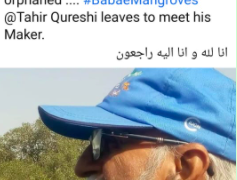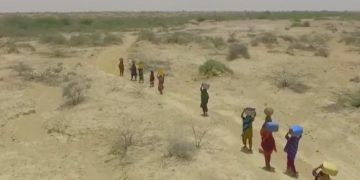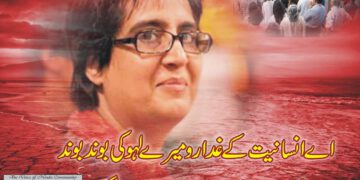Many have de scribed Siachin as the comb over which two bald men, India and Pakistan have been fighting. The highest, coldest and most inhospitable battlefield in the world has taken the lives of over 8000 young men without a single bullet ever having been fired. Most have died due to the harsh climate, or natural disasters like avalanches and landslides. Add to this the cost of maintaining the military presence by two of the world’s most impoverished countries, which amount to billions of dollars per year, and you have a situation that defies logic or sanity. But then wars and conflicts usually do!
scribed Siachin as the comb over which two bald men, India and Pakistan have been fighting. The highest, coldest and most inhospitable battlefield in the world has taken the lives of over 8000 young men without a single bullet ever having been fired. Most have died due to the harsh climate, or natural disasters like avalanches and landslides. Add to this the cost of maintaining the military presence by two of the world’s most impoverished countries, which amount to billions of dollars per year, and you have a situation that defies logic or sanity. But then wars and conflicts usually do!
The discussion on the necessity of holding on to the high ground, and capture of peaks and valleys has been done to death. Maybe the recent disaster of the avalanche burying the Gayari base with over 134 soldiers and civilians will prompt a rethink of the strategy. It is pity that a tragedy of this magnitude is the reason why attention is focused on the Siachin glacier.
This is why it is imperative for the environmentalists and glacial terrain specialists to get a buy in on the developing narrative. They have already been the central character of the Climate Change debate, but now it is time that the discussion gets out of the academic conferences and enters the public domain so the civil society can also play its part.
Glacial melt due to the warming planet looms as a great threat and the HKKH, the Hindukush, Karakoram and Himalayan region, which has also been termed as the Third Pole has been studies in this very context. While there are no definitive answers yet, hence the existence of a large body of nay sayers to the Climate Change debate, the melting and shrinking of glaciers has been documented very well. There is also evidence of some glaciers having ‘grown’ or advanced.
A report by an Indian glaciologist, Vijey Kumar Raina states that some Himalayan glaciers are growing. He has also reported on the stability of the Siachin glacier which is the second largest in the world outside the polar areas.. However there are contrasting, even contradictory views
This glacier has been a battle ground since 1984, and researchers urge that the recession or melt should be seen not just in the context of the military activity there but also in the historical context. It is here that the divergence of opinion can be seen,
Alarm had been sounded when cracks were seen developing in the glacier, and due to the appearance of a stream, which indicated a rapid melt of the source of water for the basin. Coupled with reports of it becoming the ‘highest’ dump in the world due to solid waste generated by the armies of the two countries, that was making its way into the water courses, compromising the water quality for downstream users, environmentalists have been voicing their concern oft and on.
Specialists like Arshad Abbasi have maintained that contrary to what the governments and military sources have maintained that the melting is due to global warming, it is due to the use of chemicals to build bunkers etc. that is destabilizing the glacier.
The way things stand, the truth maybe somewhere in between. Science of Climate Change is far from being an exact science and a lot of thinking by the scientists is being done on their feet. It is an evolving debate. But, whatever the outcome may be, the human cost needs to be calculated. Not just of the humans who in their uniforms are trying to defend this barren piece of land but of the humans from whom the resources are being diverted to maintain that presence there.
Time to assess whether that comb is more important or the health, education and livelihood of the multitudes living below the poverty line on both sides of the border is more important. While our hearts go out to the defenders of our borders who are buried under the avalanche at Siachin, and to their near and dear ones, we must raise the decibels for the debate to reach the ears of the planners and policy makers.
Cross posted from Lead.Org.pk.












